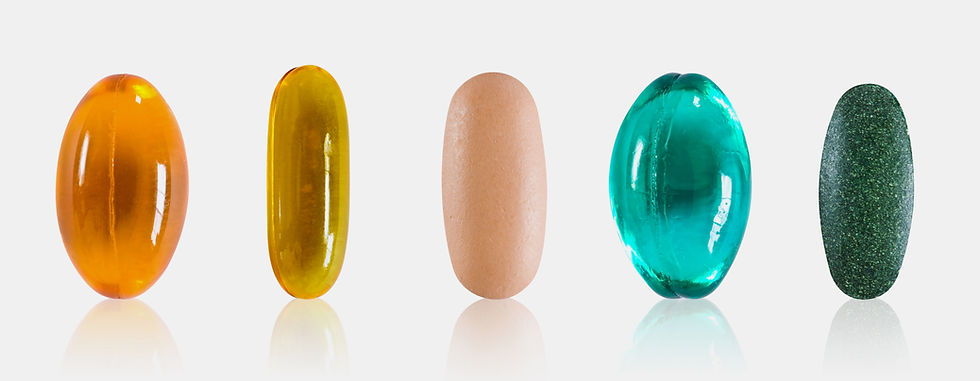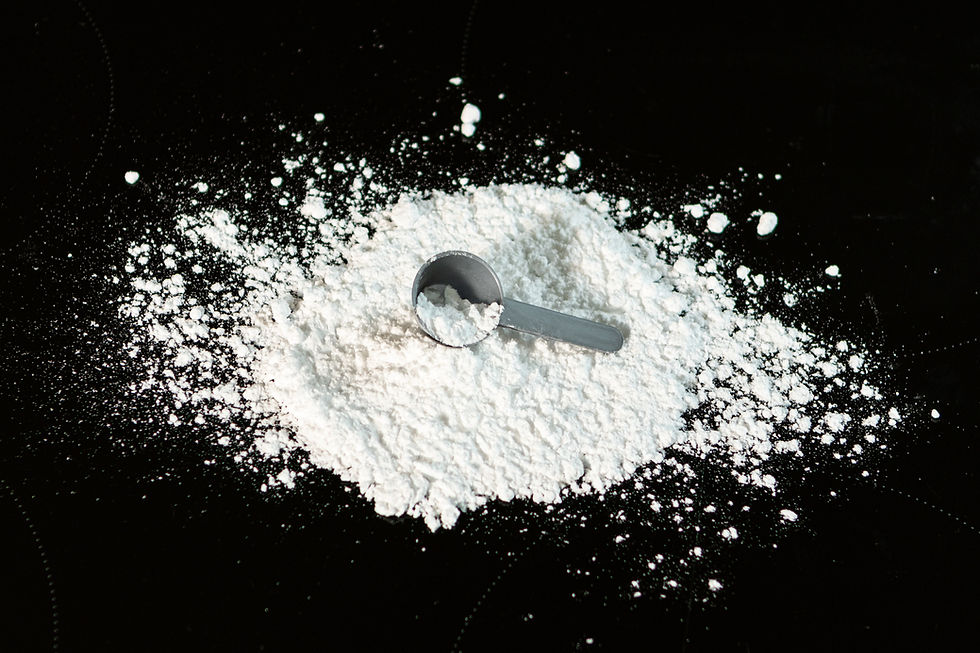Could this cheap and effective supplement be the missing link in your Fitness regimen?
- Synaptyx

- Dec 9, 2020
- 5 min read
In the world of dietary supplements, there are hundreds if not thousands of products that claim to do a whole host of things from slowing down the arthritic process, reducing inflammation, improving immunity, losing body fat, gaining muscle, and even “slowing down time” to reduce the effects of aging on the body. Many of these supplements are expensive, unproven, or even potentially harmful. As a consumer, it’s your job to weed out all the crap and find what actually works and what doesn’t. That’s a challenging task considering the lay public doesn’t read a whole lot of research, and can be easily manipulated by the marketing of these large companies that know how to make a quick buck selling “health”.
If I were to dive into every supplement that hasn’t been shown to work despite all the marketing hype, this blog would be a novel. Instead, today I’m going to focus on a dietary supplement that is cheap, effective for promoting health in a variety of ways, and presents very minimal risk in terms of negative side effects. Given the current landscape of Covid-19 and the recent focus in “boosting your immune system”, this supplement should be a no brainer.
The supplement I’m referring to is Vitamin D3. You’ve likely heard of its importance on maintaining bone health and metabolism or heard that being out in the sun consistently can help maintain higher blood levels of Vitamin D and can be a net positive for your overall health ( provided you’re not overdoing it and causing excessive skin damage). However, even though Vitamin D is very popular, the positive effects from supplementation especially in those that are deficient, osteoporotic, have cardiometabolic disease, or even in trained athletes is still poorly known and understood.
Reducing Fracture Risk in Osteoporosis
One of the most important benefits of Vitamin D supplementation in those that could be deficient or osteoporotic/osteopenic, is that Vitamin D could reduce fracture risk. Because femur and hip fractures have such a detrimental effect on overall health and mortality risk in the elderly population, this information is crucial! It should also be noted that findings of osteopenia and osteoporosis are incredibly common in the aging female population and the potential positive effect that Vitamin D, calcium, and weight bearing exercise can have on bone health is substantial!
In an analysis done with close to 31,000 total participants spanning multiple studies, the “Meta-analysis of all studies showed that calcium plus vitamin D supplementation produced a statistically significant 15 % reduced risk of total fractures (SRRE, 0.85; 95 % confidence interval [CI], 0.73-0.98) and a 30 % reduced risk of hip fractures (SRRE, 0.70; 95 % CI, 0.56-0.87)” [2] While this by no means signifies that Vitamin D and calcium together will guarantee that one doesn’t experience a fracture, a significant risk reduction is about as good as you can ask for from a supplement that also has many other positive benefits that we’ll discuss below. Bottom line, for anyone hoping to reduce risk of fractures, especially the elderly and especially those with osteoporosis, Vitamin D combined with calcium is a game changer.
Overall Health and Immunity Benefits
When it comes to promoting overall health, Vitamin D3 also stands out from the crowd in a major way too. In America, and really worldwide, we know that Cardiometabolic disease such as type 2 diabetes, metabolic syndrome ( hypertension, obesity, high cholesterol, high triglycerides, high blood sugar), and cardiovascular disease are some of the most common causes of death whether directly or indirectly. A study by Parker et al, with close to 100,000 participants “found that the highest levels of serum 25OHD were associated with a 43% reduction in cardiometabolic disorders [OR 0.57, 95% (CI 0.48-0.68)]. Similar levels were observed, irrespective of the individual cardiometabolic outcome evaluated or study design. High levels of vitamin D among middle-age and elderly populations are associated with a substantial decrease in cardiovascular disease, type 2 diabetes and metabolic syndrome.”[1]
This is incredibly important to know! By contributing to a “substantial decrease in cardiovascular disease, type 2 diabetes and metabolic syndrome”, the addition of Vitamin D supplementation could be literally saving lives or at minimum drastically improving quality of life. It should be noted in most of these types of studies, there is potential for “healthy user bias”. Healthy user bias means that in a given subset of the population, the ones who are healthiest will have less metabolic syndrome and cardiovascular disease etc, and may also be much more likely to be active outdoors or to be already supplementing with Vitamin D. This means the relationship could be associative instead of causal. Regardless of this potential for healthy user bias, the data still clearly show that those with higher serum Vitamin D demonstrated lower rates of the most crippling diseases we face as a country.
Performance Benefits
The prevailing thought for many years when it came to performance and Vitamin D supplementation was that provided that an athlete had levels that were within normal healthy ranges, there would not be an additional benefit to strength, lean mass gain, body fat loss, or overall performance. While this is generally considered to still be true, a recent study in 2020 by Rockwell et al found that “vitamin D supplementation is an efficacious strategy to maintain 25(OH)D during the fall season training and to enhance some aspects of strength/power and fat-free mass in swimmers.”
This study had a pretty small sample size, but it was found that during the fall season, the athletes that didn’t take supplemental Vitamin D had a 44% decrease in Vitamin D in their blood, while the group that supplemented with Vitamin D increased their Vitamin D levels by 8%. The group that supplemented with Vitamin D noted the following benefits
Increased Fat Free Mass
Increased performance in the Deadlift
Increased performance in the Vertical Jump
Maintenance of Free Testosterone Levels (compared to a decrease in the non-supplement group)
Body Fat Loss of 6.2 points compared to 4 points in the non-supplemented group
This study was conducted by supplementing 5000IU of Vitamin D3 per day for 12 weeks, and it should be noted that this is significantly higher than the RDA for Vitamin D which is 600-800IU per day depending on age. It should be noted that the RDA values are questioned by many practitioners due to how common it is to be deficient in Vitamin D, and the relatively safe risk profile of Vitamin D at higher doses. It should be noted that it’s still possible to experience negative side effects with excessively high intakes of Vitamin D and a blood test should always be used to assess deficiency. As with any dietary supplement, consult a doctor before you begin blindly supplementing with anything, including Vitamin D!
Not sure where to start? We can help!
Click Here to get in touch with us for a free consultation to see if we are able to help you in our clinic with your supplementation and healthcare needs!
References:
Parker J, Hashmi O, Dutton D, Mavrodaris A, Stranges S, Kandala NB, Clarke A, Franco OH. Levels of vitamin D and cardiometabolic disorders: systematic review and meta-analysis. Maturitas. 2010 Mar;65(3):225-36. doi: 10.1016/j.maturitas.2009.12.013. Epub 2009 Dec 23. PMID: 20031348.
Rockwell MS, Frisard MI, Rankin JW, Zabinsky JS, Mcmillan RP, You W, Davy KP, Hulver MW. Effects of Seasonal Vitamin D3 Supplementation on Strength, Power, and Body Composition in College Swimmers. Int J Sport Nutr Exerc Metab. 2020 Feb 4:1-9. doi: 10.1123/ijsnem.2019-0250. Epub ahead of print. PMID: 32023539.
Weaver CM, Alexander DD, Boushey CJ, Dawson-Hughes B, Lappe JM, LeBoff MS, Liu S, Looker AC, Wallace TC, Wang DD. Calcium plus vitamin D supplementation and risk of fractures: an updated meta-analysis from the National Osteoporosis Foundation. Osteoporos Int. 2016 Jan;27(1):367-76. doi: 10.1007/s00198-015-3386-5. Epub 2015 Oct 28. Erratum in: Osteoporos Int. 2016 Aug;27(8):2643-6. PMID: 26510847; PMCID: PMC4715837.




Comments